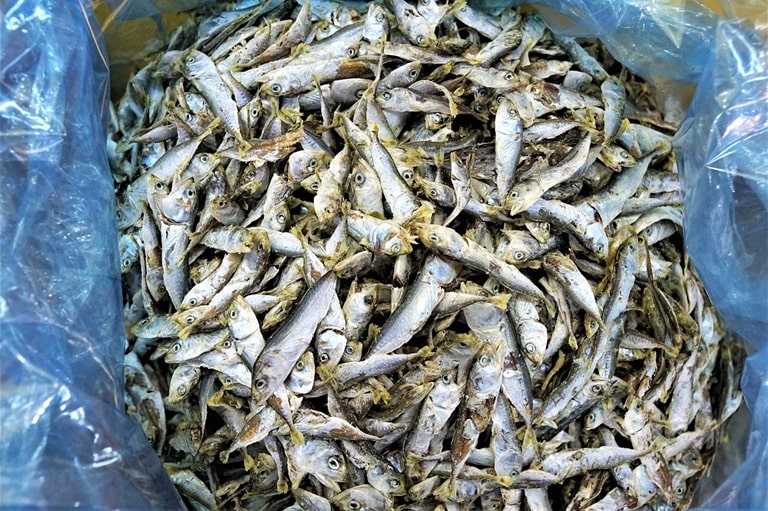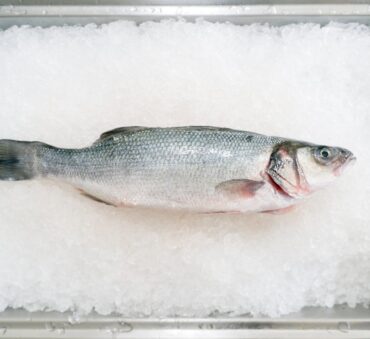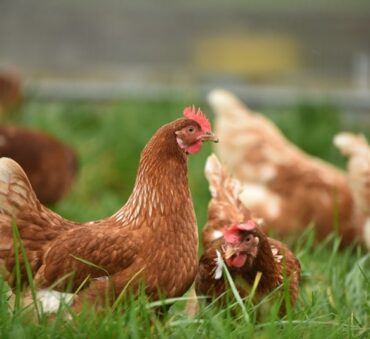In a world marked by alarming food waste statistics, conducting a food waste audit is becoming an essential practice for businesses.
But how exactly does a food waste audit help?
This systematic approach helps you quantify and analyze the food waste your business generates, providing crucial insights into where and why waste occurs.
Food waste audits can also help you create more responsible resource management practices, aligning with modern sustainability goals and consumer expectations.
In this article, we’ll explore how to conduct a food waste audit, all the considerations and preparations you need to keep in mind, and more.
Key Takeaways
- A food waste audit checklist can help you identify waste sources and quantities and implement more effective food waste prevention strategies.
- Food waste audit guidance offers insights that lead to significant waste reduction, enhanced sustainability, and improved operational efficiency.
- Adhering to legal regulations and standards in your food waste audit methodology is crucial, ensuring you comply with laws and uphold their social responsibility.
- Implementing changes based on audit findings involves targeted strategies such as staff training, operational adjustments, and ongoing monitoring.
Preparing for Your Food Waste Audit
A food waste audit begins long before any actual waste is sorted or measured.
This initial phase ensures that the audit not only captures the full picture of waste generation but also provides actionable insights for meaningful change.
Here’s how you can lay the groundwork for an effective food waste audit:
Setting Goals and Objectives
The first step in preparing for a food waste audit is to set clear and achievable goals.
This is not just about identifying what gets thrown away but understanding why it happens and how it can be mitigated.
Your objectives should align with the broader operational goals of your business, whether that’s cost reduction, compliance with environmental standards, or enhancing sustainability practices.
Here are the steps you can follow at this stage of the audit:
- Identifying key areas of focus: Start by pinpointing the areas where waste reduction can have the most significant impact. Is it in the preparation, storage, or disposal phase? Are certain types of food or specific times more prone to waste?
- Aligning with business operations: Your audit goals should complement, not complicate, your business operations. For instance, if reducing operational costs is a priority, focus on how minimizing waste can contribute to this. If sustainability is your aim, look at how reducing waste can bolster your green credentials.
- Measurable and realistic objectives: Ensure that the goals are measurable so the success of the audit can be clearly evaluated. They also need to be realistic – overly ambitious targets might be discouraging and counterproductive.
Assembling the Audit Team
For a food waste assessment to be genuinely effective, it’s vital to assemble a team that brings diverse perspectives and skills.
- Selecting a diverse team: Choose individuals who can offer unique insights into different aspects of the food waste cycle. This ensures a more comprehensive understanding of waste generation and management within your business.
- Assigning roles and responsibilities: Clearly define roles for each team member. Who will be responsible for collecting the data? Who will analyze it? Assigning specific responsibilities helps in maintaining focus and efficiency throughout the audit process.
- Gaining a holistic view: Involving members from different areas of your business is crucial. For example, kitchen staff can provide details on food preparation and waste, while the procurement team can offer insights into purchasing patterns that may contribute to waste. This holistic view is key to identifying all potential areas for improvement.

Food Waste Audit Process
The food waste audit process is not just about quantifying waste but also about uncovering the underlying causes and identifying effective strategies for waste reduction.
To conduct an audit that is both comprehensive and effective, following a structured, step-by-step approach is essential.
Here are the food waste audit guidelines you can follow:
Timing and Scheduling
A critical step in the food waste audit process is determining the optimal timing and frequency of the audit to ensure accuracy and minimize operational disruptions.
- Choosing the best time: Consider conducting the audit during a typical business cycle. Avoid periods of atypical activity, such as holidays or special events, which might skew your data. For restaurants, a regular week might be ideal, whereas for retail businesses, including different days of the week can provide a more comprehensive picture.
- Determining frequency: Regular audits can track progress and identify new areas for improvement. Annually or bi-annually is a good starting point, with more frequent audits as needed based on changes in operations or prior audit findings.
- Scheduling with minimal disruption: Plan the audit at times when it will least interfere with daily operations. Involving staff in the scheduling process can help identify the best times and ensure their cooperation.
- Pre-audit communication: Inform all staff involved about the audit schedule. Clear communication helps in preparing everyone and ensures that the audit does not hinder day-to-day activities.
Data Collection Methods
At this stage, you have to choose the data collection methods. The method selected should ensure reliability and consistency in capturing food waste data, which is fundamental for accurate audit findings.
- Manual tracking: This involves physically sorting and categorizing food waste and then recording the quantities. It’s hands-on and can be highly insightful, allowing team members to see firsthand the types of waste being produced. Equip your team with scales for weighing waste and use food waste audit forms or notebooks for recording the data.
- Digital tools: Food waste technology solutions can streamline the data collection process. There are apps and software designed for waste tracking that can automate data recording and analysis. These tools often offer added benefits like trend analysis and easy report generation.
- Combining methods: In some cases, a combination of manual and digital methods can be effective. For example, waste can be sorted and weighed manually, with the data then entered into a digital system for analysis.
- Consistency is key: Regardless of the method, consistency in data collection is crucial. Ensure all team members are trained in the chosen method and understand the importance of accurate data recording.
Analyzing Food Waste Data
The food waste analysis phase is where data transforms into a powerful catalyst for change.
It’s an intricate process of dissecting and understanding the gathered information to uncover the true nature of food waste within your business.
Identifying Key Sources of Food Waste
This task is foundational in targeting efforts to reduce waste effectively and sustainably.
- Breaking down the data: Begin by putting the audit data into distinct categories such as types of food waste, times of wastage, and areas within the business where waste is most prevalent. This could involve separating produce waste from prepared food waste or distinguishing kitchen waste from customer plate waste.
- Pattern recognition: Look for recurring patterns in the data. Are there specific ingredients that are frequently discarded? Are there particular times of day or operations, such as food prep or service times, where waste spikes? Recognizing these patterns is key to understanding the systemic issues leading to waste.
- Source identification: Once patterns are established, connect them back to their sources. For instance, if a significant amount of a particular vegetable is consistently wasted, investigate the reasons. Is it due to over-purchasing, improper storage, or menu misalignment?
- Prioritizing areas for action: After identifying the key sources of waste, prioritize these areas for action. Tackle the sources contributing the most to waste first, as addressing these can have the most significant impact on reducing overall waste.
Calculating Food Waste Percentages
This step involves quantifying waste through the calculation of food waste percentages.
But how do you calculate food waste?
For effective food waste tracking, you can implement the following strategies:
- Basic calculation method: To calculate food waste, you can use the formula: Food Waste Percentage = (Weight of Food Waste/Total Weight of Food Purchased) × 100. This will give you a percentage that represents the proportion of purchased food that ends up as waste.
- Segmented analysis: For a more detailed understanding, calculate waste percentages for different categories of food or different areas of operation. For instance, separate calculations for produce, meats, and dairy can highlight specific areas where waste is more prevalent.
- Periodic comparisons: Conduct these calculations regularly (weekly or monthly) to track changes over time. This helps in understanding if the waste reduction strategies are effective and where adjustments may be needed.
- Benchmarking against industry standards: Compare your percentages with industry averages or standards to gauge your performance relative to similar businesses.

Implementing Changes Based on Food Waste Audit Findings
The food waste audit will help you use the insights gained to implement effective changes in waste management. Here are a few actionable strategies you can use to reduce food waste:
- Developing targeted strategies: Based on the key sources of waste, you can develop strategies to address these specific areas. For example, if certain ingredients are frequently wasted, reassess your ordering practices. If over-preparation is an issue, consider revising portion sizes or prep routines.
- Staff training and engagement: Educate your staff about the findings and involve them in the solution. Training on new procedures, awareness about the importance of waste reduction, and incentives for minimizing waste can foster a culture of sustainability.
- Operational adjustments: This might involve modifying storage methods to extend food shelf-life, adjusting procurement practices, or incorporating solid and liquid food waste management techniques.
- Monitoring and feedback loop: Establish a feedback loop where staff can report on what’s working and what isn’t, allowing for ongoing adjustments and improvements, and consider using food waste upcycling approaches to further reduce waste.
Legal and Ethical Considerations
Conducting a waste audit is not just about improving operations but also about adhering to regulations and ethical standards. Let’s look at the key food waste law considerations:
- Legal compliance: This includes adhering to laws on waste disposal, recycling mandates, and any specific food waste reduction legislation. For instance, some areas may have restrictions on sending organic waste to landfills or require businesses of certain sizes to compost their food waste.
- Ethical responsibility: This involves recognizing the environmental impact of waste. Ethical management of food waste also means considering opportunities for food donation to support community needs, aligning with the broader goal of reducing hunger and food insecurity.
- Sustainable practices: Adopting sustainable practices post-audit not only meets regulatory requirements but also aligns with growing consumer expectations for environmental responsibility. This includes pursuing strategies like composting, recycling, and responsible sourcing.
- Transparency and accountability: Maintain transparency in your food waste management practices. Being open about your efforts and progress in reducing waste can enhance your reputation and build trust with customers, employees, and the community.
Wrapping Up: Getting Ready for Your Food Waste Audit
Food waste audits not only reveal the true extent of food waste but also pave the way for actionable strategies to mitigate this pressing issue.
In navigating this complex journey, the expertise and support of an experienced partner like Shapiro can be invaluable. With our deep understanding of food waste management, we offer tailored food waste recycling solutions to not only conduct thorough audits but also to implement effective changes based on the findings.
Ready to transform your approach to food waste?
Contact us today and discover how we can help you.
Food Waste Audit: FAQs
Here are the answers to some other questions on food waste management audit:
First, you should define the audit’s scope and objectives. Assemble a diverse team, select a period for data collection, and choose appropriate tools for tracking and recording waste.
Assess food waste by categorizing and quantifying the types and amounts of waste generated. You should also observe patterns and identify sources, such as overproduction or spoilage, to understand the root causes.
You can record food waste manually (with scales and recording sheets) or digitally (through food waste tracking software). For precise analysis, you must ensure consistent and accurate data collection.
Food waste includes any food substance, raw or cooked, that is discarded. This ranges from preparation scraps and spoiled produce to uneaten leftovers and expired items.
The amount of food waste considered ‘normal’ varies by business type and size. However, any amount presents an opportunity for reduction and efficiency improvement.
The largest sources of food waste often include overproduction, improper storage, over-purchasing, and inefficient processes within food preparation and handling.
Traditionally, food waste ends up in landfills. However, more sustainable destinations include composting facilities, anaerobic digestion systems, or being repurposed for animal feed or donations.
Food waste is responsible for a substantial amount of greenhouse gas emissions and resource wastage. It also represents a lost opportunity to feed the hungry and contribute to food security.
Food waste is alarming due to its vast environmental footprint, contributing to climate change, and its ethical implications in a world where hunger and malnutrition persist.
Baily Ramsey, an accomplished marketing specialist, brings a unique blend of anthropological insight and marketing finesse to the digital landscape. Specializing in educational content creation, she creates content for various industries, with a particular interest in environmental initiatives.



